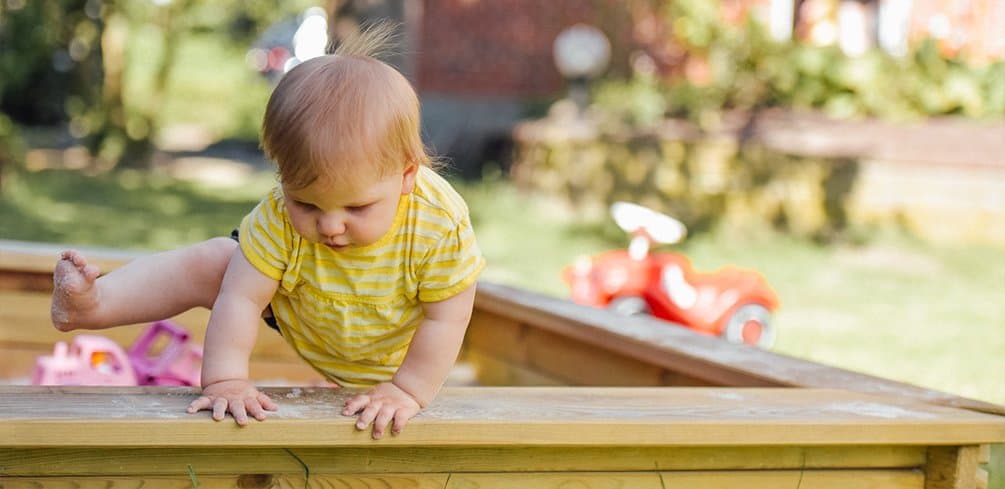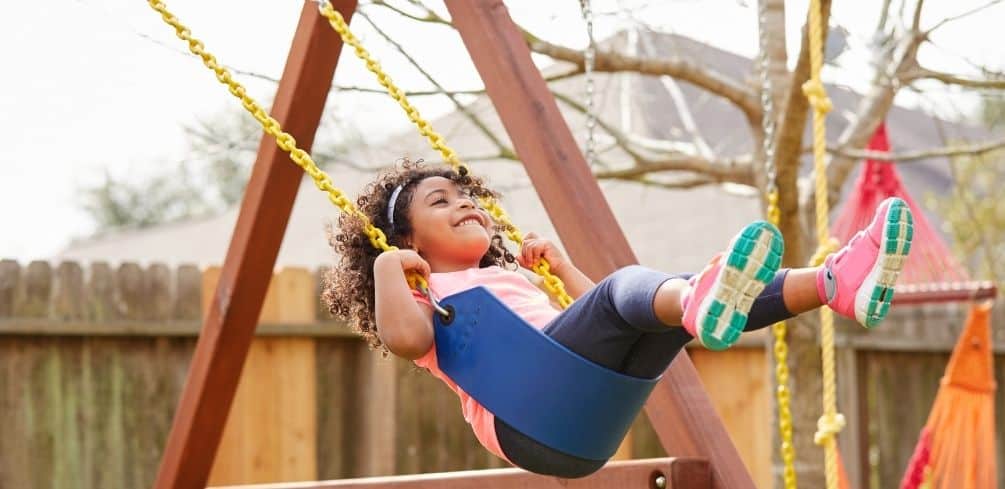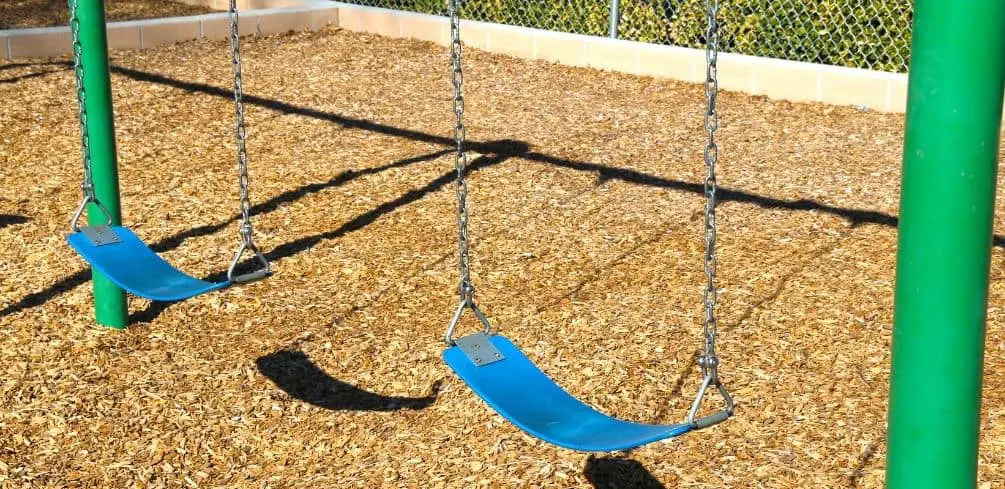Sandpit safety can be divided into three categories, namely:
- How to set up a sandpit.
- Maintenance and care.
- Hygiene tips.
Setting up a sandpit is a crucial activity as it will determine how safe your sandpit will be in the long run. In addition, hygiene, maintenance, and care also make a sandpit safe for kids.
Sandpits are an excellent way to keep your little ones engaged and ensure they get some fresh air. However, sandpits can also be a cause of worry as poor hygiene standards can lead to health issues for kids. In addition, sandpits are outdoor playground features, and they are exposed to many environmental factors like wild animals and broken branches.
Understanding the necessary safety measures to take can help you keep your child safe. Also, you can ensure your playground meets the health standards and regulations stipulated by the government. In addition, you will learn all the sandpit safety tips that will help you maintain high hygiene standards at all times.
How to Set Up a Sandpit
Sandpit safety starts with the setup of the sandpit. If you use the wrong materials, then there will be health hazards in the future.
So you need to ensure that your sandpit is built with high-quality materials that are safe for kids.
Location
Choose a sandpit location wisely as it will determine many environmental factors that will affect it. Therefore, the sandpit should be in an open location without trees casting a shadow on it.
Also, it should be in a well-drained area in the backyard or playground so that any water automatically drains.
For example, setting up a sandbox at a poorly drained location means that the play sand will always have moisture. Moisture will make the play sand an excellent breeding ground for bacteria and some bugs.
Also, having trees above the sandpit ensures that leaves and broken branches always fall into the sandbox.
Another factor to consider is the bushes in your backyard or playground. Bushes are hiding spots for rodents and bugs. Installing a sandpit near bushes tempts rodents to use it as a litter box.
Bugs will go into it when it becomes dirty.
Materials
All sandbox materials, including the wood, play sand, and the surrounding materials, should be safe for kids to touch. Use natural wood that doesn’t contain any toxic materials.
Ensure the wood is sanded down so that your kids don’t get splinters when playing in the sandpit.
Choose high-quality play sand, even if it means you will pay a little extra money. The best play sand should be naturally occurring, clean, and composed of fine sand particles.
Therefore, carry out home tests to ensure you bought safe play sand for your sandbox. Don’t put gravel around the sandpit as it can get into the sandpit and hurt your child.
Instead, look for suitable outdoor surfacing materials that are safe for kids. Make sure to ensure that no one uses toxic substances near the sandpit.
Sand Levels
The ideal play sand levels for a sandpit should be several inches deep. Please don’t put too much play sand in the pit such that you can’t rake it thoroughly in a few minutes.
However, your rake shouldn’t be able to touch the base of the pit without moving some play sand around. It ensures the play sand level is a few inches below the frame of the sandpit.
There are different options of sand to choose to fill the sandpit with, make sure to choose the one that fits you.
Care and Maintenance
Maintenance is the key to ensuring your sandpit stays clean and safe for kids. There are several care and maintenance tips that will keep your sandpit hygienic at a low cost.
However, remember that you will need to be consistent with care and maintenance for the best long-term results.
Rake the Sandpit
Rake your sandpit before kids get in it to remove any dirt, branches, or harmful substances. Also, raking play sand exposes it to fresh air, which can remove any odor and moisture.
It would be best to rake the sand after children play to remove any foreign substance they may bury in the sand.
Buy a rake and use it frequently on the sandpit to keep kids from getting hurt by foreign substances. Also, you will know when animals pooped in the sandpit before kids get it.
Therefore, you can keep them away from the sandpit as it is cleaned and sanitized.
Wash the Sand
Many parents and playground managers forget the simple task of washing the sand with water. It is imperative to install a drainage system in your sandpit during installation.
That way, you can use a garden hose to pour water on the play sand, and it will drain. Water washes away dirt and chemicals in the sand.
It would help if you let the top layer dry, then use a rake to bring the bottom layers to the top to dry. Repeat the process until you are satisfied that the play sand is completely dry.
Cover the sandpit after the cleaning process.
You can sprinkle a mild detergent on the sand before drenching it in water. The detergent will kill any bacteria in the play sand.
Alternatively, you can sprinkle white vinegar on the sand before you wash it. It will do the same job as the detergent.
Cover the Sandpit
It would be best if you always covered the sandpit whenever it is not in use. Sandpits attract bugs and rodents, and placing a cover on them keeps them clean. This helps even if with cats that want to go in the sandbox.
The most common cover solution is a tarp. However, tarps don’t allow the play sand to breathe, leading to the accumulation of moisture.
Instead, you can poke small holes in your tarp to allow air circulation underneath.
Alternatively, use a fine mesh to cover your sandpit. A mesh allows air to circulate while keeping bugs and animals away from the play sand.
Rain can wash your sandpit as the mesh will allow water through.
Finally, covering a sandpit prevents dirt from accumulating on it. Uncovered sandpits have leaves, branches, dry grass, and small stones.
Children can get hurt by sharp materials that fall into a sandpit when it’s left uncovered.
Sanitize the Play Sand
It’s imperative to sanitize play sand from time to time with mild ingredients. Please don’t use chemical sanitizers as they are harmful to children.
Instead, mix one-part vinegar and one part water to form a homemade sanitizer. Pour the mixture into a spray bottle and cover the top layer of the sandpit with the mixture.
Rake the play sand and leave it to dry. Repeat the process 2-3 sand to effectively kill any germs in your sandpit.
Change the Play Sand
It is a good practice to change play sand every six months for hygiene reasons. It would help if you emptied all the sand in your sandpit when doing a replacement.
Place the old sand in a plastic bag and dispose of it.
Other special circumstances will require you to change to play in the sandpit. For example, if your child gets sick from an infection like salmonella, a test needs to be carried out to determine whether your sandpit is a breeding ground.
Positive results demand that you empty the sandpit and replace it with new, clean play sand.
Sometimes, you need to change a portion of the sand because your child had an “accident” on the sandpit. Human feces have many germs, and it is essential to remove any play sand that comes into contact with your baby’s poop.
Don’t forget to remove any sand that comes into contact with animal poop.
Maintain Play Sand Levels
Always check the sand levels of your sandpit to ensure they are acceptable. Play sand levels reduce as children spill the sand to the sides or carry it in their pockets.
As a result, you need to keep a bag of play sand around to boost the levels when they drop. Also, carry out frequent inspections on the sandpit to check on the levels.
Hygiene Sandpit Safety Tips
Hygiene is a crucial part of keeping a sandpit safe for kids to use it. Teaching people how to maintain high hygiene standards when using a sandpit is the key to preventing germ accumulation.
Therefore, here are some hygiene tips that you need to use to keep everything clean.
Washing Hands
Ensure kids wash their hands after using a sandpit to prevent the spread of germs. Children have a habit of placing their fingers in their mouths, eyes, and ears.
Washing your kid’s hands is a simple way to eliminate germs from their hands. You should also wash your hands if you touch the play sand too.
Keep Pets Out of the Sandpit
Keep dogs and cats out of the sandpit when children are playing. Animals will use the sandpit as a litter bin every chance they get.
You don’t want your kids touching animal poop when playing. You can create a little perimeter wall around the sandpit to keep pets out.
You should teach your kids not to go with the pet into the sandbox.
Avoid Diaper Leaks
Change the diaper of your child before letting them into a sandpit to play. Diaper leaks are harmful and hard to detect. In addition, diapers are dirty, and they will leave germs in the sandpit after diaper leaks.
Therefore, ensure kids have a clean diaper anytime they are going into a sandpit to play. Also, teach older toddlers not to urinate or defecate in the sandpit.
Wash Sandpit Toys
Children love to play with their toys, and you need to clean them after each session to remove any germs. Use a mild detergent on the toys and dry them every day.
Then, you can sanitize them as often as you can to minimize the accumulation of germs.
Never leave toys in the sandpit because they are potential areas for germs to breed. Remember that kids can carry their toys anywhere.
Moreover, there is a chance that kids will touch their snacks without washing their hands.
Prevent Children from Eating Play Sand
Children can eat play-sand when they are unsupervised, and it will be harmful to their health. Teach your kids not to eat play sand so that they don’t ingest germs into their system.
In addition, it will save you many trips to the hospital in the future.
Avoid Public Sandpits
Public sandpit safety is lower than that of home sandpits. You can take your child to a playground sandpit after investigating the safety measures the playground has in place.
However, there is a huge chance that your child will catch a bug from playing in public sandpits.
Choose private sandpits like private playgrounds or your neighbor’s sandpit. Even then, you should follow up on the hygiene standards for the sandpit.
Otherwise, invest in a sandpit in your backyard and take proper care for hygiene purposes.
Are Sandpits Safe?
Sandpits are safe for kids to use when you do proper maintenance and care. Many safety and health issues that arise when sandpits start when sandpits are not maintained properly.
Therefore, you can let your children play in a sandpit with the proper care. It will ensure that your child doesn’t get ill or get in contact with germs.
Is It Expensive to Maintain a Sandpit?
No. You can do proper maintenance and care of your sandpit as a DIY project. It takes a few minutes to do basic maintenance activities.
Therefore, don’t refuse to install a sandpit or sandbox in your backyard because of maintenance expenses. Your highest cost will be for installing the sandbox in the backyard.
After that, you only need to replace the play-sand frequently. All the other care activities will be free of charge, and you can do them at home.
If you want to get something that is softer and less of a mess than play sand, try kinetic sand it won’t dry out and kids love it.
Therefore, you can rest easy knowing that you won’t have to spend weekly or monthly sandpit maintenance fees.
Are Sandpits Healthy for Kids?
Yes. Sandpits help kids with developmental milestones and creativity. Children will build sandcastles and other sand games, which are ideal for kids.
Therefore, they are healthy for kids who are growing up. Let your toddlers understand the pleasure of having fun under the sun without getting hurt.
Conclusion
Sandpit safety should be on the mind of every parent because unhygienic sandpits can lead to hospital trips. Moreover, sharp objects in the sandpit can harm your child. But, overall, your children will have more fun in a sandpit when you are not worried that they will get sick.
You must make sure that kids don’t enter into unsafe sandpits at all. Also, take your kids to a safe sandpit if you don’t have one in your backyard.
Ask other parents for their recommendations for playgrounds with sandpits close to your home.
Therefore, make sandpit play dates for your little ones with their friends and relatives. Keep an eye on them when they are in the sandpit at all times. It is a bad idea to leave children unsupervised in a sandpit.
Above all, ensure a sandpit is well maintained for your kid’s safety.
Please be careful and use at your own risk
None of the authors, contributors, administrators, or anyone else connected with BestPlaygroundSets, in any way whatsoever, can be responsible for your use of the information contained in or linked from these web pages.





